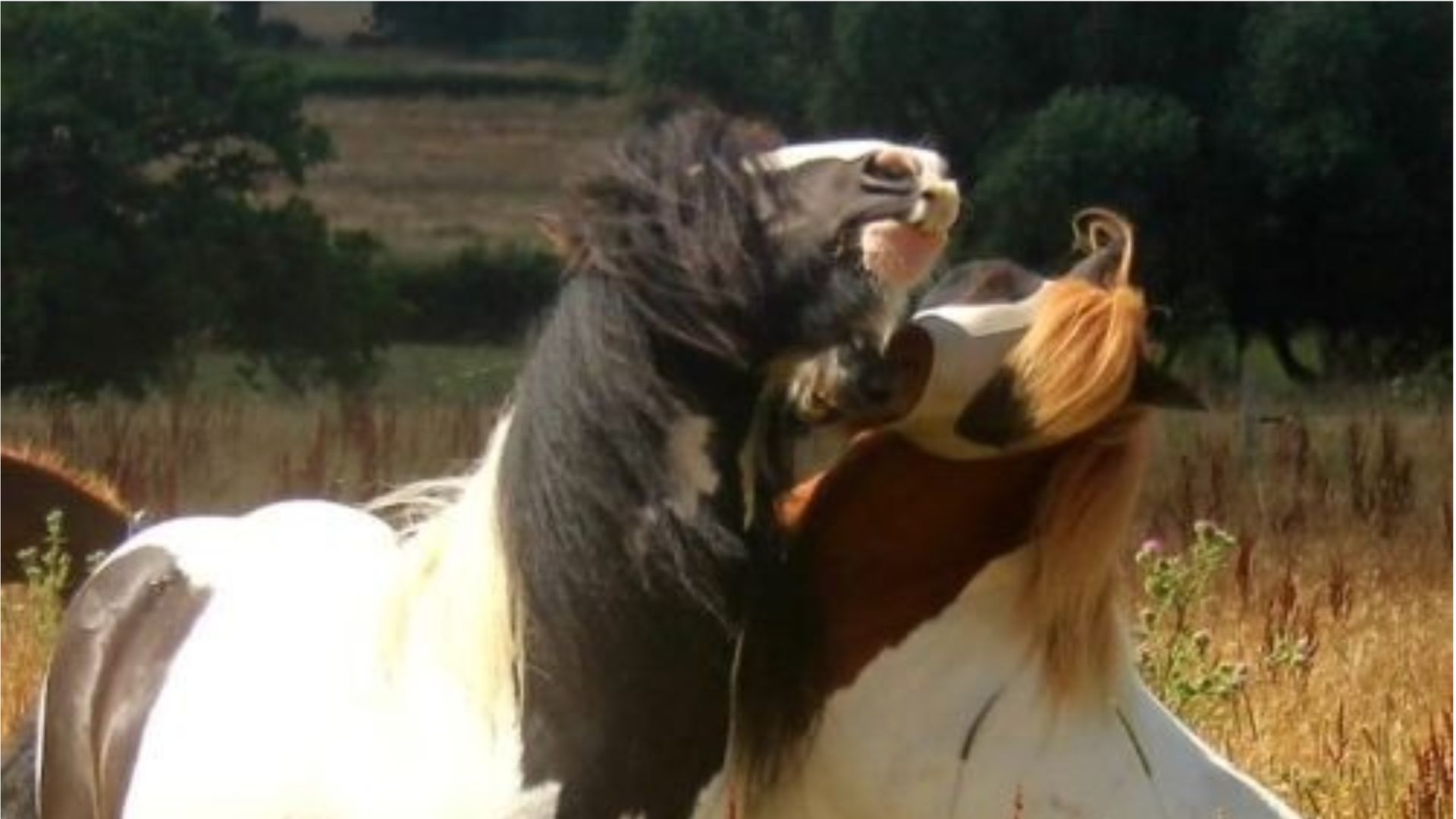Lyme Disease in Horses and Natural Support Strategies
The Silent Threat of Lyme Disease in Horses
Lyme disease is a growing concern among horse owners, primarily because it''s caused by a stealth microbe, Borrelia burgdorferi, that hides deep within the body’s tissues. This bacteria is transmitted by ticks, and once it invades the body, it becomes incredibly difficult for the immune system to detect and eliminate. The disease presents a unique challenge, much like equine sarcoids, because it can remain dormant until a window of immune system weakness presents itself.
In this blog post, we’ll explore the nature of Lyme disease, the difficulties in diagnosing and treating it, and how natural support strategies can help manage this chronic condition.
Is It Lyme Disease? The Challenge of Diagnosis
Lyme disease gets its name from Lyme, Connecticut, where it was first identified in humans in the 1970s. In horses, the symptoms can be elusive and non-specific, often including low-grade fever, stiffness, swollen joints, muscle tenderness, lethargy, weight loss, neurological issues, and behavioral changes. These symptoms are often described as ‘subclinical,’ meaning they don’t present as obvious illness but rather as a collection of subtle signs.
Borrelia burgdorferi is transmitted when a tick feeds on the host for at least 24 hours. However, diagnosing Lyme disease early is challenging because the symptoms may not appear for weeks, and blood tests often return normal results. Additionally, since the ticks typically drop off after feeding, you might never see the tick that infected your horse.
This disease is similar to fibromyalgia or chronic fatigue syndrome in humans, where the horse struggles with oppressive fatigue, muscle pain, and a range of vague symptoms that make the condition difficult to diagnose and treat effectively.
Diagnosis breakdown: a flawed system for chronic illnesses
Traditionally, diagnosis is used to categorise an illness to define a treatment plan. While this works well for acute conditions like a broken leg or appendicitis, it’s less effective for chronic illnesses like Lyme disease. The symptoms of many chronic illnesses overlap, making it hard to pin down the exact cause.
For horses, conventional treatments often involve repeated courses of antibiotics, anti-inflammatories, and steroids, which can further damage the immune system without resolving the underlying issue. This approach leaves the horse in a state of managed illness, where the symptoms are controlled, but the horse never fully recovers.
Tests that measure antibodies to Borrelia burgdorferi can also be misleading. Horses may not produce these antibodies immediately after infection, leading to false negatives. Conversely, antibodies can remain in the bloodstream long after the bacteria are gone, which may indicate past exposure rather than active infection.
Antibiotic resistance: the stealth microbe’s defense mechanism
One of the biggest challenges in treating Lyme disease is that Borrelia burgdorferi is highly resistant to antibiotic therapy. This resistance, combined with the ability of the bacteria to mimic other illnesses, makes Lyme disease notoriously difficult to treat.
The bacteria prefer low-oxygen environments, so they settle deep within the body’s connective tissues, including tendons, ligaments, and joint cartilage. This deep tissue invasion explains why Lyme disease often causes swollen legs and persistent inflammation. The lymphatic system tries to remove the infection but often fails because the bacteria are so well hidden.
The bacteria can also affect the brain, spinal cord, and various organs, further complicating treatment. The mantra “Fix the cell to get well” is particularly relevant here because healthy cells are crucial for overall health. When cells are stressed or damaged, symptoms arise, and in the case of Lyme disease, it truly is a whole-body experience.
The role of a healthy immune system
The immune system is the body’s primary defence against illness, responsible for removing old or abnormal cells, clearing toxins, and fighting off pathogens. When the immune system is compromised, as is often the case with chronic illnesses like Lyme disease, the body’s cells suffer.
Several factors can stress the immune system, including an inappropriate diet, a toxic environment, chronic mental stress, a sedentary lifestyle, and harmful microbes. For instance, a diet lacking in essential nutrients or high in processed foods can lead to systemic inflammation and weaken the body’s defenses. Similarly, chronic stress disrupts the body’s natural repair processes, making it harder for cells to recover from injury or infection.
Microbes: the hidden cause of chronic illness
The body is home to trillions of microbes, most of which are confined to the gut, skin, and mucous membranes. These microbes, known as the microbiome, are generally kept in check by the immune system. However, when the microbiome is disrupted, harmful microbes can gain the upper hand.
Certain microbes, like the tick-borne B.burgdorferi, have evolved to evade the immune system by living inside cells, where they cannibalise the cells for nutrients. This intracellular lifestyle makes them difficult to eradicate. Even when the immune system mounts a defence, the microbes can persist in a dormant state, ready to reactivate when the immune system weakens.
Chronic Immune Dysfunction (CID): when the pan boils over
Chronic immune dysfunction (CID) occurs when the body’s cells are continuously stressed and unable to recover. This can happen due to a combination of factors, including infection, stress, and environmental toxins. Over time, the immune system becomes overwhelmed, leading to a host of symptoms, including fatigue, joint pain, digestive issues, and neurological problems.
In horses, CID often manifests as chronic fatigue or generalised pain, conditions that are difficult to treat with conventional medicine. The immune system’s response to the microbes causes inflammation and tissue damage, further exacerbating the symptoms.
Supporting your yorse naturally: Alleviate, Detox, and Fortify
Managing Lyme disease and other chronic conditions in horses requires a holistic approach that focuses on restoring the body’s natural balance. The first step is to alleviate pain and stabilise cellular stress. This can be achieved through natural therapies that reduce inflammation and support adrenal function.
Next, a full-body detox is essential to remove toxins and pathogens from the body. A targeted detox program can help restore the microbiome and reboot the immune system, providing a clean slate for healing.
Finally, fortifying the body with the right nutrients and support is crucial for long-term health. This includes optimising the diet, ensuring the horse has access to high-quality forage, and supplementing with essential vitamins and minerals.
The Alleviate / Detox / Fortify Protocol
- Alleviate: Start by reducing pain and stress. Use gentle, natural remedies like DuoBute or StressTonic to stabilise the horse’s condition.
- Detox: Address the root cause of the illness with a comprehensive detox program like LymeCARE. This program helps suppress stealth microbes, balance the microbiome, and support overall health.
- Fortify: Reinforce the body’s defences with a nutrient-rich diet and appropriate supplements. Focus on high-quality forage and balanced mineral solutions to keep the horse’s system running smoothly.
Considerations for post-treatment care
If your horse has undergone antibiotic treatment, it’s important to restore gut health before starting a detox program. A gut regeneration protocol, including SIBO-CARE and GutAminos, can help repair the gut lining and reset the digestive system.
Additionally, if you’re considering worming your horse, opt for natural methods and allow time for the liver and kidneys to recover before starting a detox program.
Conclusion: empowering your horse’s natural healing abilities
Dealing with Lyme disease in horses is challenging, but by focusing on natural support strategies, you can help your horse manage the condition and improve their overall well-being. Remember, the key to success lies in supporting the immune system, restoring balance, and providing the body with the tools it needs to heal.










